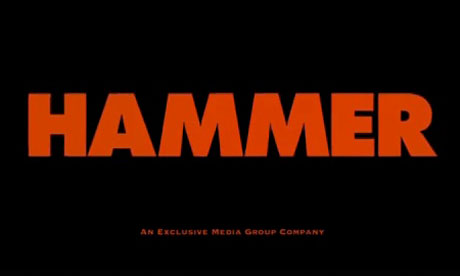Hammer Studios influence on the British Horror Genre.
Hammer Studios is said to have defined the horror genre. The
studio was founded back in 1934 by actor and theatre entrepreneur William Hinds
and owner of film distribution company Exclusive
Films, Enrique Carreras. The company didn’t thrive through the 30’s and 40’s until
after World War II in 1947 when the sons of the founders, James Carreras and
Anthony Hinds, had taken over and there was a growing demand for British-produced supporting movies. The big hits of the studios didn’t come
until the mid-1950’s when the company produced The Quatermass Xperiment (1955,
Val Guest) and with the success of it the studio switched focus from struggling
crime thriller pictures of the early fifties to horror.
The genre truly flourished in Britain with the rest of the Quatermass
triliogy, X the Unknown (1956) and Quatermass 2 (1957), and other
marking films like, Terence Fisher’s The Curse of Frankenstein (1957) and
Dracula (1958). The films both stared the same person, Christopher Lee,
who played the ‘Creature’ in The Curse of Frankenstein and ‘Count Dracula’
the following year in Dracula and went on to play the well-known
character six more times for the studio and appeared in numerous other
productions. Peter Cushing played Baron Victor Frankenstein
in The Curse of Frankenstein, a role he would play five times
for Hammer Studios. The two actors became synonymous names for the company.
One of these films was, of course, one of the many defining and previously mentioned Dracula (1958, Terence Fisher). This was a story many had made in the past, but Hammer Studios thrived off with its lurid colour, charismatic performances and was just different from the others. It displayed many conventions expected to be seen in a horror film like one of the most common ones of sound/music, fear of the unknown and death. The film was the first ‘vampire’ movie to be in colour and show many of the now very well-known features to vampires like fangs and oozing blood from a bite.
One of these films was, of course, one of the many defining and previously mentioned Dracula (1958, Terence Fisher). This was a story many had made in the past, but Hammer Studios thrived off with its lurid colour, charismatic performances and was just different from the others. It displayed many conventions expected to be seen in a horror film like one of the most common ones of sound/music, fear of the unknown and death. The film was the first ‘vampire’ movie to be in colour and show many of the now very well-known features to vampires like fangs and oozing blood from a bite.
 The film broke the mould of the ‘typical’ Dracula and Van
Helsing that was set by its ancestors. Dracula was now young, charming and well-spoken
rather than a hypnotic stare, stylised movements and thick accent. Van Hesing
wasn’t the elderly savant typified Edward van Sloan in 1931, he was younger and
more dynamic, fiercely intelligent and physically capable. The new and
reinvented characters were best shown through the ‘final fight’ scene.
The film broke the mould of the ‘typical’ Dracula and Van
Helsing that was set by its ancestors. Dracula was now young, charming and well-spoken
rather than a hypnotic stare, stylised movements and thick accent. Van Hesing
wasn’t the elderly savant typified Edward van Sloan in 1931, he was younger and
more dynamic, fiercely intelligent and physically capable. The new and
reinvented characters were best shown through the ‘final fight’ scene. 
No comments:
Post a Comment